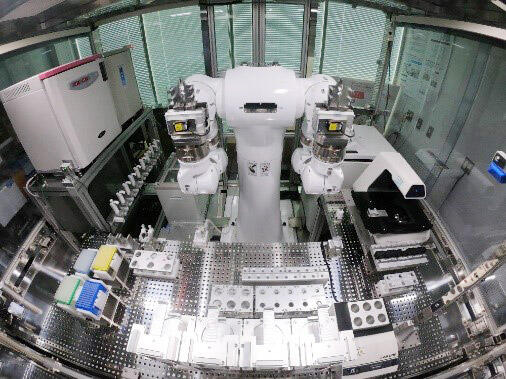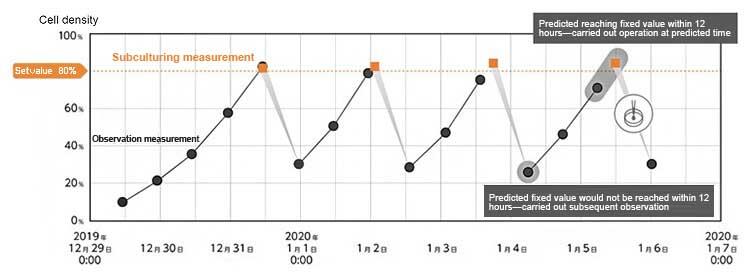RIKEN, the Institute of Physical and Chemical Research, has announced the development of a system that combines a humanoid robot with AI software to achieve autonomous cell culturing, allowing research to be continued during the SARS-CoV-19 pandemic, which has been a major issue with limits in place on entry to research facilities. If the system is made available for practical use, safe and efficient research will be enabled to continue under similar conditions, raising expectations for new approaches to research.

The research group selected a robot designed for life-sciences research with two arms able to manipulate the same equipment as humans. However, as-is, the robot requires instructions to operate, so the group added a "brain" consisting of AI software to enable it to culture cells autonomously. The AI was programmed to read cell density from microscopic images, and then make predictions based on past data. This functionality was then applied to the cultivation of human embryonic kidney cells.
Accordingly, the robot calculated cell density on the culture plate in preset 12-hour increments. As the cells continued to divide, the robot predicted the time at which the culture would exceed an 80% density. It then subtracted a portion of the cells from the plate and transferred them to a new plate in a process called subculturing. The experiment was carried out for 9 days lasting from December 29, 2019, and into the new year, during which subculturing was carried out repeatedly. There were no major errors or bacterial contamination in that time, and the system was able to autonomously culture the cells without any human intervention.

There are already numerous systems being put to practical use for automated cell culturing, but these are primarily used for culturing mass amounts of known cells following fixed procedures. Meanwhile, it is difficult to use such systems for basic research where the correct procedure is not yet known, or for experiments in which the conditions must be considered.
Experiments in the life sciences must often be continuously carried out at night, on weekends, and during long holidays. Furthermore, strict limitations on access to universities, research facilities, and laboratories were put in place in response to the Covid-19 pandemic. If this system reaches the level of practical application, it will likely reduce the burden imposed on researchers. Post-experiment review is also made easier when using the system compared to experiments done manually.
Koichi Takahashi (computational biology), leader of the Laboratory for Biologically Inspired Computing at the RIKEN Center for Biosystems Dynamics Research, says he hopes to "apply the technology to the culturing of iPS cells (induced pluripotent stem cells) in the future, and to apply it to a clinical setting as soon as possible." He says the system may also be used for the discovery of new scientific knowledge.
In addition to the biocomputing research team, the research group was comprised of the RIKEN Laboratory for Retinal Regeneration, Robotic Biology Institute Inc., and the Department of Ophthalmology and Visual Sciences, Kyoto University Graduate School of Medicine,. The results were published in SLAS Technology, a US journal on automation in the life sciences, on December 3, and announced by RIKEN and the Japan Science and Technology Agency (JST) on December 4. The research was carried out under the direction of the New Energy and Industrial Technology Development Organization (NEDO) and with support from the JST-Mirai Program.
Original article was provided by the Science Portal and has been translated by Science Japan.




